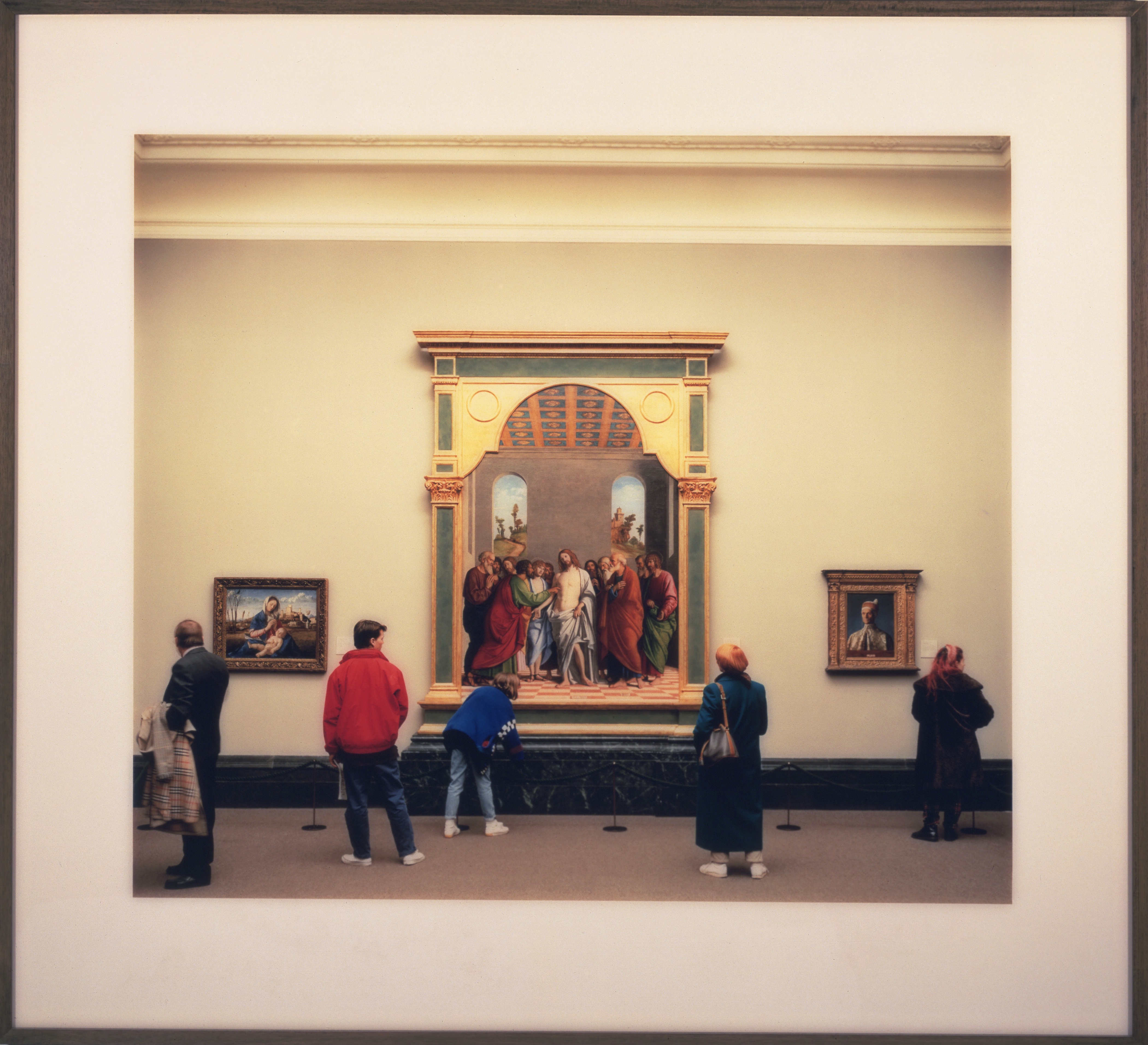Thomas Struth
(Geldern, Germany, 1954 - )
National Gallery I, London
1989 (printed 1990)
Chromogenic print
71 x 77 1/4 in. (180.3 x 196.3 cm)
Collection of the Akron Art Museum
Knight Purchase Fund for Photographic Media
1993.10
More Information
Thomas Struth and other young German photographers forged a new look and scale for photography in the 1980s, one that enabled photographs to compete for visual attention with painting and sculpture. He turned to new technologies: color printing of unprecedented size and a mounting technique that makes the image appear lush and luminous. "I felt a need to make these museum photographs,” says Struth, “because many works of art...have now become mere fetishes, like athletes or celebrities.” In National Gallery I, London Struth clicked the shutter at a moment when the spectators appear to worship the paintings and even echo some of the figures in them. Standing before Struth’s photograph, you the viewer echo its figures in venerating art.

